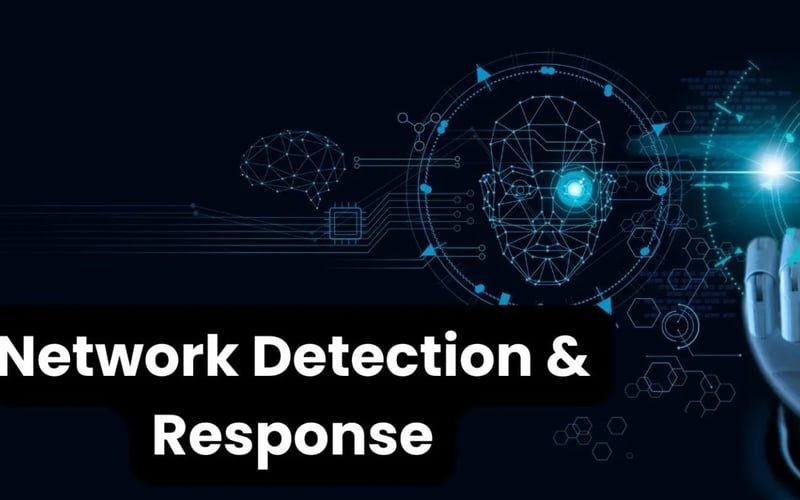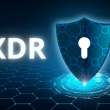Introduction
As more organizations embrace digital transformation, the shift to multi-cloud environments is accelerating. Businesses increasingly rely on multiple cloud providers—such as AWS, Microsoft Azure, and Google Cloud Platform (GCP)—to optimize performance, reduce vendor lock-in, and leverage specialized services. However, with this flexibility comes a host of cybersecurity challenges, particularly around visibility, control, and threat detection.
Network Detection and Response (NDR) has emerged as a critical solution for defending multi-cloud environments. NDR continuously monitors network traffic—both north-south (between cloud and external environments) and east-west (within and across cloud instances)—to detect threats, anomalies, and malicious behaviors that traditional tools often miss.
In this blog, we’ll explore the unique challenges of securing multi-cloud environments and outline best practices for implementing NDR to achieve effective threat detection and incident response.
What is NDR?
Network Detection and Response (NDR) is a security tool that monitors network traffic to find unusual or harmful activity. It uses smart tools like machine learning and behavior analysis to detect threats that may slip past firewalls or antivirus software. Once a threat is found, NDR can either alert your security team or take action automatically.
NDR is especially useful in today’s world, where many devices and users access networks from different locations. It keeps an eye on all the network traffic and helps detect threats quickly, often before they cause damage.
Why NDR is Important for Multi-Cloud Environments
In a multi-cloud environment, businesses use services from more than one cloud provider. This setup offers flexibility, cost savings, and better performance. But it also comes with challenges.
Every cloud service has its own tools, rules, and security features. When these systems don’t work well together, gaps can appear. Hackers love to find and use these gaps. That’s why NDR is so important—it helps provide a single view of network activity across all clouds.
Here are a few reasons why NDR is vital for multi-cloud security:
- Improved visibility: NDR shows you what’s happening in all your clouds.
- Faster response: It helps you react quickly to any issues.
- Better threat detection: It uses advanced tools to find hidden risks.
- Simplified operations: One system to manage threats in all cloud platforms.
The Challenges of Securing Multi-Cloud Environments
1. Fragmented Visibility
Each cloud provider has its own networking constructs, APIs, telemetry formats, and security controls. This fragmentation makes it difficult to obtain a unified view of all network activity across platforms.
2. Inconsistent Security Policies
Security policies that work in AWS may not directly translate to Azure or GCP. Without standardization, organizations face inconsistencies that create exploitable gaps.
3. Lateral Movement Across Clouds
Threat actors can compromise one cloud environment and move laterally to another via misconfigured interconnects or compromised credentials.
4. Encrypted Traffic Blind Spots
A large portion of cloud traffic is encrypted, and traditional perimeter tools often fail to inspect this data, making it easier for threats to hide.
5. Complex Attack Surfaces
With containers, microservices, APIs, serverless functions, and remote access endpoints distributed across multiple clouds, the attack surface grows exponentially.
NDR can address these issues by offering deep traffic analysis, behavioral analytics, and intelligent response capabilities. But success depends on how it’s implemented.
Best Practices for NDR in Multi-Cloud Environments
1. Establish Cloud-Native Traffic Visibility
To enable NDR in the cloud, organizations must first gain access to network traffic data.
Best Practice:
- Leverage native traffic mirroring features (e.g., AWS VPC Traffic Mirroring, Azure vTAP, or GCP Packet Mirroring) to capture traffic for NDR analysis.
- Integrate cloud flow logs (e.g., AWS VPC Flow Logs, Azure NSG Flow Logs) into the NDR system to augment visibility.
- Deploy lightweight NDR sensors or agents in key network segments or VNets/VPCs to monitor east-west traffic across workloads and services.
2. Normalize and Correlate Across Clouds
Disparate telemetry formats across clouds can lead to siloed data and missed correlations.
Best Practice:
- Use an NDR platform that supports multi-cloud normalization, enabling consistent parsing and enrichment of traffic metadata from all cloud providers.
- Centralize network telemetry into a unified data lake or SIEM/XDR integration point for broader threat correlation.
3. Implement AI-Powered Behavioral Analytics
Attackers in cloud environments often avoid signature-based detection. They use legitimate tools or subtle misconfigurations to move stealthily.
Best Practice:
- Choose NDR solutions that use machine learning and behavioral baselining to detect anomalies in user, device, and workload behavior.
- Implement unsupervised learning models that can flag novel threats without relying on prior indicators of compromise (IOCs).
4. Monitor East-West Traffic and Inter-Cloud Flows
Most cloud security tools focus on north-south traffic. But in multi-cloud setups, the east-west traffic—including inter-cloud communications—is often where lateral movement occurs.
Best Practice:
- Position NDR sensors strategically to monitor intra-cloud and inter-cloud traffic, including container-to-container and workload-to-database interactions.
- Look for unusual traffic patterns, such as:
- New connections between cloud regions.
- Service accounts accessing unfamiliar APIs.
- Traffic spikes or data exfiltration attempts.
5. Integrate NDR with Cloud-Native Security Tools
NDR shouldn’t operate in a vacuum. Integration with other security tools enhances threat context and response capabilities.
Best Practice:
-
Integrate NDR with:
- Cloud Security Posture Management (CSPM) for misconfiguration insights.
- SIEM and SOAR platforms for alert correlation and automated response.
- XDR platforms to enrich endpoint and identity-based detections with network context.
-
Use APIs to ingest cloud-native threat intelligence (e.g., AWS GuardDuty, Microsoft Defender for Cloud) into the NDR platform.
6. Enable Decryption Where Feasible
Encryption hides valuable telemetry. While it’s critical for data protection, attackers often exploit it to evade detection.
Best Practice:
- Use TLS termination points (like load balancers or ingress controllers) to inspect decrypted traffic.
- Where decryption isn’t feasible (e.g., end-to-end TLS), rely on encrypted traffic analysis (ETA) techniques to detect anomalies in packet size, flow behavior, and certificate anomalies.
7. Adopt a Risk-Based Prioritization Approach
In multi-cloud setups, not all assets are equal in importance. Some may store sensitive data or be part of critical applications.
Best Practice:
- Combine asset context from CMDBs or cloud inventory tools with NDR telemetry to prioritize alerts by risk.
- Use risk scores to guide threat hunting and response workflows, focusing on high-impact threats first.
8. Automate Threat Detection and Response
Manual investigation doesn’t scale in multi-cloud environments.
Best Practice:
-
Implement automated detection rules that flag known attack behaviors, such as:
- Lateral movement
- Credential abuse
- Port scanning
-
Use SOAR playbooks to isolate compromised workloads, disable access keys, or trigger policy changes automatically upon detection.
9. Continuously Validate with Red/Blue Team Exercises
You can’t protect what you don’t test. Regular adversarial simulations help validate your NDR strategy.
Best Practice:
- Run red team simulations or purple team engagements that mimic real-world attacker behavior.
- Measure how well your NDR platform detects initial access, command-and-control (C2), privilege escalation, and data exfiltration in cloud contexts.
10. Ensure Compliance and Audit Readiness
Organizations in regulated industries must prove visibility and control over cloud traffic.
Best Practice:
- Use NDR logs and metadata to support audit trails, forensic investigations, and compliance reporting (e.g., PCI-DSS, HIPAA, GDPR).
- Retain network traffic metadata for required periods and use tagging/classification to trace data flow paths across clouds.
NDR Platform Capabilities to Look For
When selecting an NDR solution for a multi-cloud environment, ensure the platform supports:
| Feature | Description |
|---|---|
| Multi-cloud telemetry ingestion | Supports AWS, Azure, GCP, OCI, and private clouds. |
| Distributed sensor architecture | Lightweight, cloud-native sensors deployable in multiple regions. |
| Encrypted traffic analysis | Detects anomalies in encrypted traffic without full decryption. |
| AI-driven detection | Behavioral baselining and anomaly detection using machine learning. |
| Incident response automation | Integration with SOAR tools for automated containment. |
| Scalability | Handles traffic from dynamic workloads, microservices, and containers. |
| Integration readiness | Connects easily with SIEMs, XDR, CSPM, and cloud-native APIs. |
Real-World Use Case: NDR in a Multi-Cloud Fintech Deployment
A fintech company operating in both AWS and Azure used NDR to detect a stealthy attacker who compromised a development workload in Azure. The attacker attempted to move laterally to an AWS-hosted database by exploiting a misconfigured peering connection.
The NDR platform:
- Detected unusual traffic between non-associated regions.
- Flagged lateral movement attempts using non-standard ports.
- Automatically triggered a SOAR playbook that quarantined the workload and revoked the IAM role.
This rapid detection and response avoided a potential data breach and met the organization’s stringent compliance requirements.
Final Thoughts
Securing multi-cloud environments is no easy task. With multiple providers, diverse architectures, and complex interconnects, traditional tools fall short of delivering comprehensive visibility and threat detection.
NDR bridges the gap by monitoring network traffic across all clouds, detecting hidden threats, and enabling fast response. But simply deploying NDR is not enough—success lies in following best practices that account for the unique dynamics of multi-cloud security.
By establishing visibility, leveraging AI-driven detection, and integrating with your broader security stack, NDR can become a cornerstone of your multi-cloud defense strategy.











